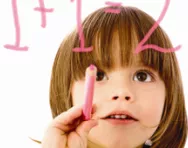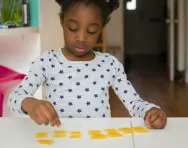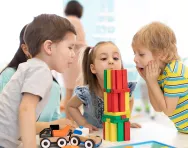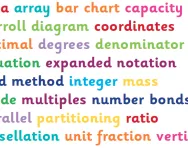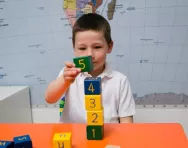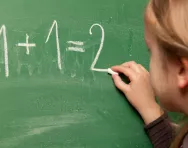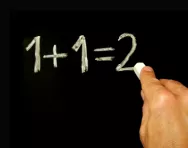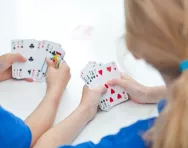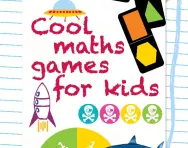Important update from TheSchoolRun
For the past 13 years, TheSchoolRun has been run by a small team of mums working from home, dedicated to providing quality educational resources to primary school parents. Unfortunately, rising supplier costs and falling revenue have made it impossible for us to continue operating, and we’ve had to make the difficult decision to close. The good news: We’ve arranged for another educational provider to take over many of our resources. These will be hosted on a new portal, where the content will be updated and expanded to support your child’s learning.
What this means for subscribers:
- Your subscription is still active, and for now, you can keep using the website as normal — just log in with your usual details to access all our articles and resources*.
- In a few months, all resources will move to the new portal. You’ll continue to have access there until your subscription ends. We’ll send you full details nearer the time.
- As a thank you for your support, we’ll also be sending you 16 primary school eBooks (worth £108.84) to download and keep.
A few changes to be aware of:
- The Learning Journey weekly email has ended, but your child’s plan will still be updated on your dashboard each Monday. Just log in to see the recommended worksheets.
- The 11+ weekly emails have now ended. We sent you all the remaining emails in the series at the end of March — please check your inbox (and spam folder) if you haven’t seen them. You can also follow the full programme here: 11+ Learning Journey.
If you have any questions, please contact us at [email protected]. Thank you for being part of our journey it’s been a privilege to support your family’s learning.
*If you need to reset your password, it will still work as usual. Please check your spam folder if the reset email doesn’t appear in your inbox.
5 number and counting skills primary-school children need
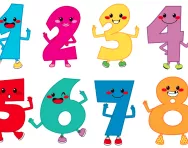
Skill 1: Seeing numbers everywhere
Introduce numbers into your child’s life from an early age to let them become familiar with their shape and form. Point out numbers in real-life situations so they can gain an awareness of how they’re omnipresent in our world: prices in a supermarket, numbers on packaging, road signs, number plates… digits are literally everywhere you look and helping your child recognise this can help them to understand their significance and meaning in different contexts.
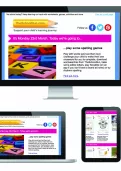
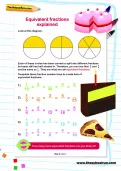
Boost Your Child's English & Maths!
- Weekly programme for each school year
- Worksheets sent direct to your inbox
- Keeps your child's learning on track
There are lots of picture books involving numbers which can help to familiarise your child with the way digits look and also what each number means (a picture of three ladybirds next to the digit 3, for example). Encourage your child to look through these books, saying the numbers out loud and then counting each object.
Using songs and music to learn about counting is a great way to embed these skills. Many songs involve subtracting one number each time, so brush up on 'Five Little Speckled Frogs', 'Five Little Ducks', 'Five Little Monkeys' and 'There were ten in the bed' and start a sing-song!
Numbers can be tricky to learn to write correctly. You can help them by letting them practise writing digits in sand or by writing them big in the air.
Skill 2: Counting objects accurately
From an early age, children need to learn how to count objects accurately. Explain to them that the trick is to ensure you count each and every item and that you don’t count any items twice.
With concrete, tangible objects this might mean moving each object methodically to one side once counted. When counting drawings on a worksheet it might mean ticking off each item as you count; in a real-life situation it can be fun to count pigeons in the park, people in a swimming pool, books on a shelf and so on.
Skill 3: Counting on from any number
In Key Stage 1 children become familiar with numbers 0-100.
In Key Stage 2 children move on to much larger numbers, negative numbers, decimal numbers and learn about the patterns in our number system (prime numbers, factors, multiples, etc.).
Children usually learn to count by counting from 0 or 1, but it's also essential for them to be able to count from any number (starting with numbers under 20). This really helps them with addition work as it means that, for example, if they're adding 5 and 4 they can “put 5 in their head” and count on 4 to reach 9.
At home playing board games like snakes and ladders can help children learn to count accurately and steadily. It’s also good for them to become accustomed to the dotted patterns on dice and dominoes, resources often used during maths lessons in schools.
Other useful 'maths aids' you probably have at home are a ruler (help your child 'count on' from any number on it, moving their fingers along in the right direction) and a weather thermometer (to demonstrate negative numbers, show them that the temperature can drop below zero).
Skill 4: Counting in patterns
In Key Stage 1 children will learn to count in 2s, 5s and 10s. (This might be taught in a physically active way at school, so when counting in 5s they might be told to put five fingers in the air with each count, reinforcing how many they are actually counting on.)
By the end of Year 2 most children will have also learnt to count on in steps of 3 and 4.
Counting in patterns leads to extending number sequences. Children learn how to analyse a string of numbers and to decipher what should come next or which number is missing. For example:
- in Year 1 they might be asked to complete this sequence: 4 6 __ 10
- In Year 2 it might be 45 55 65 75 __
You could help your child by printing off a number square. If they are counting in fives, encourage them to colour in each number (5, 10, 15, 20, etc) and then chant the numbers out loud.
If they are learning to count in 3s, you could encourage them to make blocks of Lego for each of the numbers (3, 6, 9, 12, 15, etc) and point at each of these blocks as they say the numbers.
Throughout Key Stage 2 children continue to learn all multiplication tables, as well as to count in jumps of 20, 25, 50 and 100.
They will need to work out missing numbers in sequences of negative numbers: -10 -6 -2 __ 6 and decimal numbers: 0.4, 0.6, ___, 1, 1.2
Skill 5: Identifying odd and even
In Key Stage 1 children learn about numbers that are odd and even. It’s a crucial step, as they’ll later learn how this can help with calculations such as division.
Even at a young age you can help them understand that an even number can be divided equally. This is best done in everyday situations, using tangible objects: an even number of sweets or treats can be shared equally between two siblings, for example, but an odd number can't. Another good way of understanding the concept of odd and even is to give your child a number of socks (for example: 7). Ask them if they have an odd number of socks or an even number of socks. If they don't know, get them to put the socks into pairs. If there is one odd one left over, they know that the number of socks was odd.You can also print out an odd and even worksheet to demonstrate the same principle on paper.
By the end of Year 2 children need to know that the numbers ending in 2, 4, 8 and 0 are even and numbers ending in 1, 3, 5, 7, 9 are odd.
